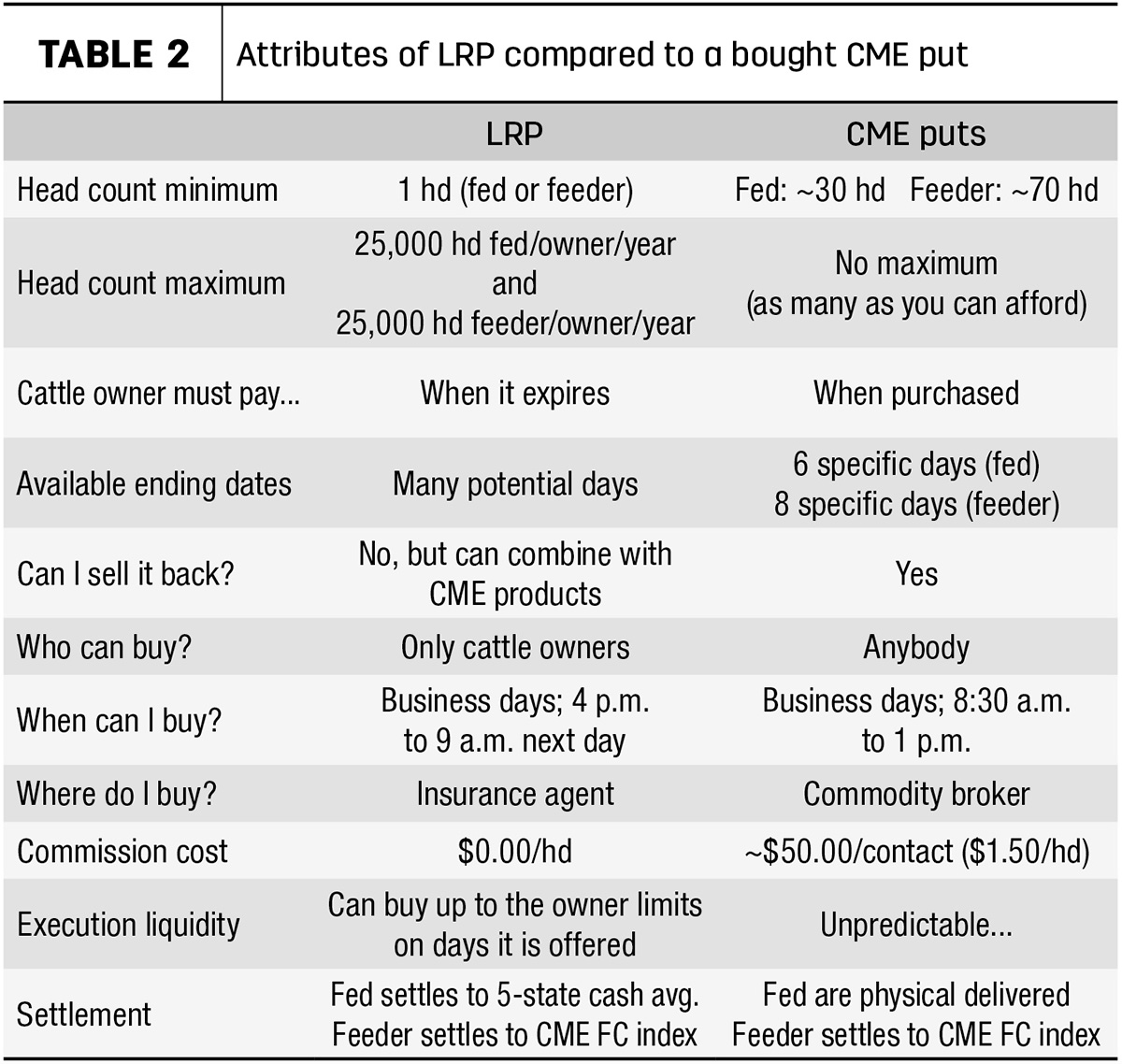Key Variables to Take Into Consideration When Picking Animals Risk Protection (LRP) Insurance
When reviewing choices for Animals Risk Protection (LRP) insurance policy, several vital aspects require careful consideration to make certain efficient danger management in the farming sector. Picking the appropriate protection options tailored to your particular animals operation is extremely important, as is comprehending exactly how premium expenses correlate with the degree of protection offered.
Coverage Options
When considering Livestock Threat Defense (LRP) insurance policy, it is crucial to recognize the numerous protection alternatives readily available to alleviate threats in the agricultural field. Animals Danger Security (LRP) insurance coverage offers various protection alternatives tailored to satisfy the diverse requirements of animals manufacturers.
One more crucial coverage option is the endorsement duration, which determines the size of time the insurance coverage holds. Manufacturers can pick the endorsement period that best suits their production cycle and market conditions. Additionally, protection levels and prices differ based on the type of animals being guaranteed, providing manufacturers the versatility to personalize their insurance policy prepares according to their details requirements.
Comprehending the different protection choices offered under Animals Danger Defense (LRP) insurance is vital for manufacturers to make informed decisions that successfully secure their animals operations from market unpredictabilities.
Costs Costs

Animals Danger Protection (LRP) insurance coverage provides essential insurance coverage alternatives tailored to minimize dangers in the agricultural sector, with a substantial element to take into consideration being the computation and framework of premium expenses. These consist of the type and number of livestock being guaranteed, the protection level chosen, the current market rates, historical price information, and the size of the protection duration.
Premium prices for LRP insurance coverage are generally computed based on actuarial data and take the chance of analysis models. Insurance providers examine historic information on livestock prices and production costs to figure out a proper costs that shows the degree of threat entailed. It is crucial for livestock manufacturers to very carefully evaluate premium prices and coverage options to ensure they are appropriately shielded versus prospective economic losses as a result of damaging market conditions or unpredicted occasions. By comprehending how exceptional expenses are computed and structured, manufacturers can make enlightened choices when selecting the appropriate LRP insurance policy for their operation.
Eligible Animals
The resolution of qualified livestock for Livestock Risk Security (LRP) insurance protection entails cautious factor to consider of details standards and characteristics. Animals types that are typically eligible for LRP insurance policy include feeder cattle, fed lambs, livestock, and swine.
Feeder cattle, for instance, are generally qualified for LRP coverage if they fall within defined weight arrays. Fed livestock might likewise be eligible, however they have to satisfy particular weight and quality grade requirements. Swine eligible for coverage normally consist of market weight animals meant for massacre. Lambs are an additional category of livestock that can be thought about for LRP insurance, with aspects such as weight and age playing an important function in establishing their qualification.
Before picking LRP insurance coverage for livestock, producers should carefully evaluate the qualification criteria laid out by the insurance coverage copyright to guarantee their animals fulfill the needed requirements for insurance coverage.
Policy Adaptability
Plan flexibility in Livestock Risk Defense (LRP) insurance coverage allows producers to customize insurance coverage to suit their certain requirements and run the risk of management methods. This flexibility empowers animals producers to tailor their insurance policy plans based on elements such as the kind of animals they have, market problems, and individual threat tolerance levels. By offering adjustable choices, LRP insurance policy makes it possible for manufacturers to successfully handle their threat direct exposure while safeguarding their animals procedures versus unpredicted market volatility.
Insurance Claims Process
Upon experiencing a loss or damages, producers can launch the claims procedure for their Livestock Threat Security (LRP) insurance coverage by immediately calling their insurance policy copyright. It is critical for producers to report the loss immediately to expedite the cases process. When reaching out to the insurance coverage provider, producers will need to provide in-depth information regarding the occurrence, consisting of the day, nature of the loss, and any relevant paperwork such as veterinary documents or market costs.

After the assessment is complete, the insurance coverage company will decide concerning the claim and connect the outcome to the manufacturer. The producer will obtain payment according to the terms navigate to these guys of their Livestock Danger Protection (LRP) insurance plan if the claim is authorized. It is necessary for manufacturers to be aware of the claims process to guarantee a smooth experience in the event of a loss

Verdict
To conclude, when choosing Animals Threat Defense (LRP) insurance policy, it is vital to take into consideration protection options, premium expenses, eligible livestock, policy versatility, and the cases process. These essential aspects will help guarantee that breeders and farmers are properly protected against possible risks and losses connected with their livestock operations. Making a notified decision based on these considerations can inevitably bring about much better economic safety and security and satisfaction for livestock producers.
Livestock Threat Protection (LRP) insurance coverage uses different protection options tailored to meet the diverse demands of animals manufacturers.The determination of qualified livestock for Livestock Threat Defense (LRP) insurance policy coverage entails careful factor to consider of specific criteria and qualities.Policy versatility in Animals Risk Protection (LRP) insurance policy permits manufacturers to tailor coverage to fit their specific needs and risk administration methods.Upon experiencing a loss or damages, producers can start the insurance claims process for this content their Animals Threat Security (LRP) insurance coverage by quickly contacting their insurance copyright.In read the full info here conclusion, when choosing Livestock Risk Protection (LRP) insurance, it is vital to think about coverage options, premium prices, eligible animals, plan adaptability, and the insurance claims process.